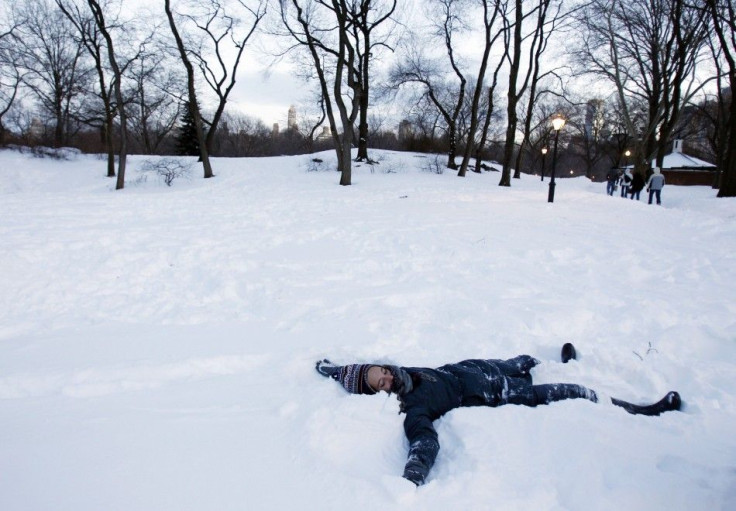Hurricane Irene New York: 5 Freak Disasters in 2010 and 2011

Neither snow, nor rain, nor heat, nor gloom of night can keep a postman from his job -- but they can cripple New York. In fact, minus gloom of night, New York has been hit with every one of those problems and more in the past year.
September 2010: The Tornadoes
It's not Kansas, but Brooklyn, Queens and Staten Island were shocked in mid-September when two tornadoes tore through the boroughs, leaving trails of downed trees and crushed cars. The storm did come from Kansas, actually, and Ohio, and it brought 125-miles-per-hour winds and fierce lightning. It came on suddenly, and there was no warning: people were driving on highways or sitting in their houses, and suddenly trees were falling and roofs being torn off. To make matters worse, the thunderstorm that spawned the tornadoes also involved a macroburst, or a huge downward gust of wind, in a 40-square-mile section of Queens. One woman was killed when a tree fell on her car, and thousands were left without power, some for several days.
December 2010: The Blizzard
The remarkable streak of disasters continued on Dec. 26, when the so-called North American Blizzard of 2010 dumped nearly two feet of snow on the New York metropolitan area, accompanied by winds up to 60 miles per hour. It was the biggest snowstorm New York had experienced since 2006 -- on par with the legendary blizzards of 1996, 1947 and 1888 -- and it crippled the city. Nearly all mass transit, from the Long Island Rail Road to New Jersey Transit to Newark Airport and J.F.K. Airport, was either shut down or close to it. Buses got stuck in snowdrifts and subways stalled on aboveground tracks in Brooklyn; even snowplows couldn't get down some streets because of the combination of high drifts and abandoned vehicles. Mayor Michael Bloomberg was blasted for his handling of the storm's aftermath, particularly when two people died because the streets were impassable and ambulances could not reach them in time.
July 2011: The Heat Wave
On the weekend of July 22, New York began to bake under three days of near-record heat. Early Friday afternoon, the mercury reached 104 degrees in Central Park -- the highest temperature since 1977 and dangerously close to the city's all-time record of 106 degrees, according to the New York Times -- and the unbearable heat lasted all the way through Sunday, claiming two lives. Factoring in humidity, it felt like 112 degrees. Con Edison was overwhelmed by the power demand from blasting air conditioners and resorted to brownouts in parts of Brooklyn and Queens in order to keep the grids running.
Heat waves are not uncommon during New York summers, but this one was. One could say, 'Oh, it's summer, it's late July, it's hot,' but this is different, National Weather Service spokesman Christopher Vaccaro told the New York Times.
August 2011: The Earthquake
In the scheme of natural disasters, the magnitude 5.8 earthquake that hit Virginia on Aug. 23 and was felt up and down the Eastern Seaboard hardly deserved the title. People in office and apartment buildings around the city felt a slight trembling, and officials checked buildings for structural damage, but nothing more. However, it was notable because earthquakes are so rare in this part of the country. As West Coast residents accustomed to strong quakes snickered, their East Coast brethren took to Facebook and Twitter to marvel at the event. No damage was reported in New York, but residents can now say facetiously that they survived the New York City Earthquake of 2011.
August 2011: The Hurricane
If the earthquake was something of a joke, Hurricane Irene is quite the opposite. Irene, currently a Category 2 storm off the coast of North Carolina, is expected to reach New York early Sunday, and forecasters say it has the potential to be one of the worst hurricanes ever to hit the region. It will probably be worse than Tropical Storm Floyd in 1999, and perhaps even on par with the legendary New England Hurricane of 1938, which sent a storm surge from Battery Park to Canal Street and struck Long Island so hard it reformed the entire geology of parts of eastern Suffolk County.
Irene may be the first major hurricane here in years, but New York can't be blamed if it's getting a bit weary of natural disasters.
© Copyright IBTimes 2024. All rights reserved.











